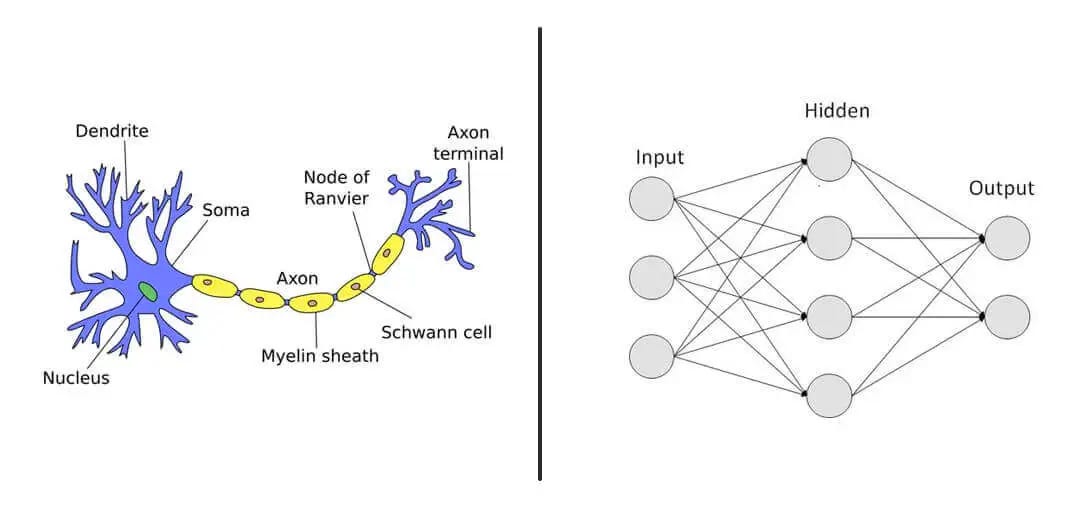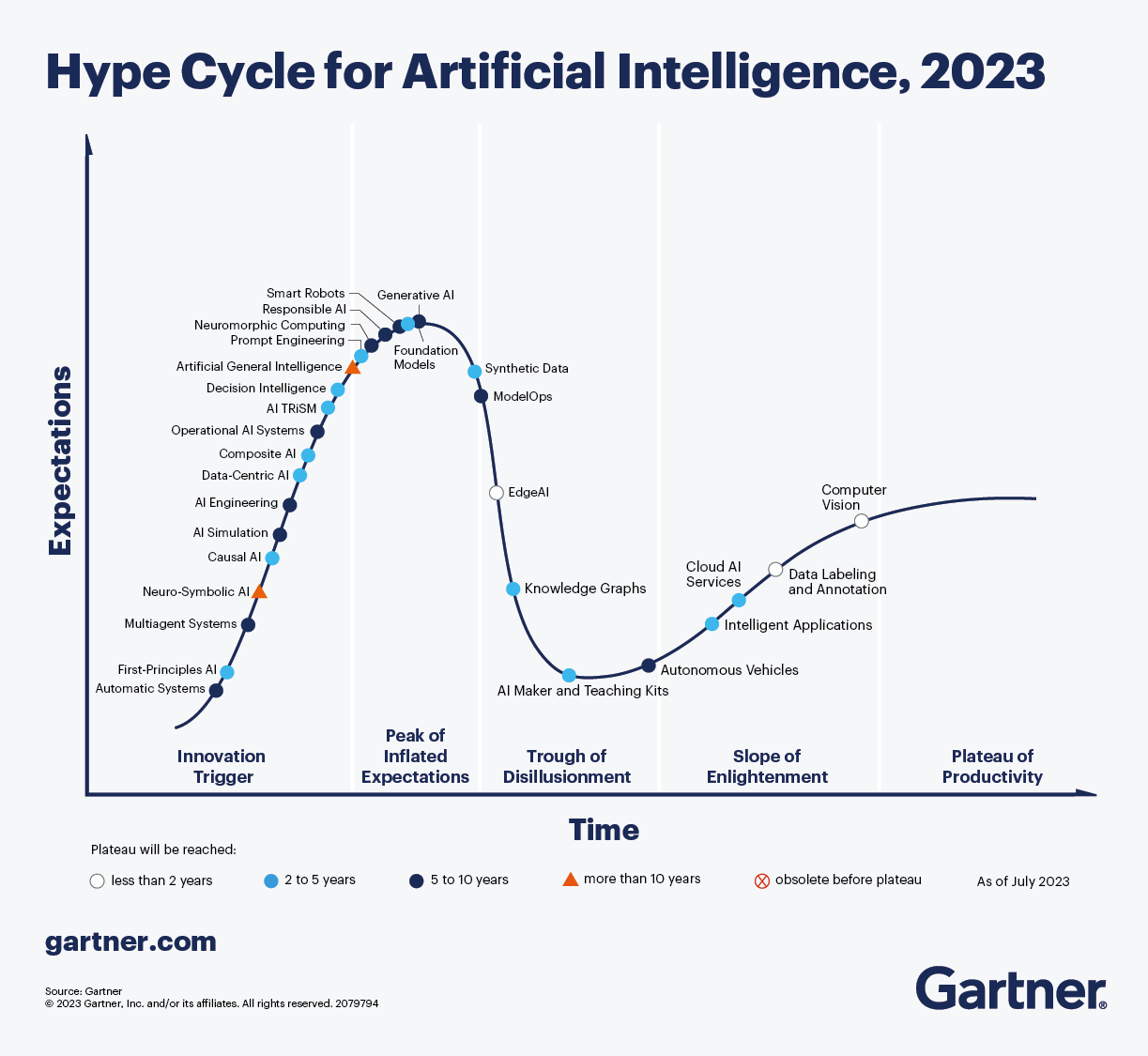Neurosymbolic: The Future of AI
By: Jason Chen
As technological advancements continue, artificial intelligence (AI) also continues to evolve and develop. You may wonder that if AI has the potential to solve everyday problems, what advancements need to be made to AIs? There are still many limitations to symbolic AIs, also known as traditional AIs, as they use data analysis to identify and solve problems and perform specific tasks [1].
Symbolic AIs rely on symbols and explicit rules to process knowledge, which produces limitations to problems that involve ambiguity. However, combining neural networks and symbolic AI, also known as neurosymbolic AI, completely breaks this limitation. To understand the full potential of neurosymbolic AI, let's compare it to symbolic AIs.
What are Symbolic AIs?
Symbolic AI uses explicit human knowledge and behavioral rules to simulate humans in machines [3]. Using symbols, which are representations of objects or concepts, it can perform tasks like reasoning and problem-solving. Logic plays a central role in symbolic AI using rules in the form of if-then statements [5]. For example, if a student doesn’t do his or her homework, he or she may not receive a good score for this class. Then the system may check test scores from this student to conclude that the student wouldn’t receive a good score.
Benefits of Symbolic AIs
Transparency: Due to explicitly defined rules and logic, it better allows us to understand how certain decisions are made and why it is made.
Manipulation: Due to the ability to manipulate symbols, symbolic AI processes and analyze structured data efficiently.
Interactions: Decisions that align with human reasoning allow for better interaction between people and AIs and more trust in AIs.
Convenient: Easy to use in settings where rules are very clear.
Limitations of Symbolic AIs
Scalability: The number of rules or knowledge needed by the system grows rapidly as complexity grows.
Adaptability: Due to many pre-defined sets of rules or knowledge, it would be hard for the system to adapt to new information.
Selective: Only efficient in selected environments where complete data sets are given and weak in handling environments where there are unstructured data sets.
Bias: Since the system requires manually encoded knowledge or rules from humans, bias occurs as the information comes from these experts. It would potentially lead to skewed or incorrect conclusions.
What are Neural Networks?
Neural networks are techniques used in AIs that process data simulating a human brain. They are also known as artificial neural networks (ANNs) and are the machine learning process called deep learning. Neural networks consist of layers of nodes or neurons where each node is connected [7]. Each node has its associated weight and threshold and they are activated by the output of any node being above the specified threshold value [7]. If it is, it sends data to the next layer of the network [7].
- Source: CleverTap
Benefits of Neural Networks
Complexity: Able to simulate non-linear and complex relationships.
Generalize: Can generalize and predict unseen data from learning initial input and their relationships. Also, infer hidden relationships through initial input.
Fewer constraints: No imposed restrictions on input variables
Robustness: Performs well even having a lack of data from input
Limitations of Neural Networks
Costly: Training neural networks requires huge amounts of labeled data
Confusion: Due to the complexity, it would be hard to provide clear reasoning for their decisions.
Ethic: Raises ethical concerns when used in areas like healthcare
Time: It may take a long course of time to be fully developed.
Bridging Symbolic AI and Neural Networks
Symbolic AI and neural networks both have their limitations, but by combining these two approaches, we could overcome the limitations of each of their respective weaknesses while also leveraging their respective strengths. This integration of these two approaches is called “Neurosymbolic AI”. Due to this hybrid approach, neurosymbolic AI not only exceeds in performance but also in generalization and interpretability [2]. This combination is a key step forward in the field of AI.
Source: Gartner
Benefits of Neurosymbolic AI
Enhanced Efficiency: Requires significantly less data compared to symbolic AI and is also capable of achieving highly accurate decisions with as little as 10% of the typical data required [2].
Enhanced Capability: Can perform tasks that purely data-driven models struggle with. Making them suitable in fields like healthcare and more.
Enhanced Interpretability: Provides clear and easy-to-understand reasoning as to why a certain decision was made. The clarity in the reasoning allows for easier debugging and validation.
Enhanced Scalability: Able to be applied in different environments where traditional AI can’t be applied due to these models being adept at reasoning with complex data sets [2]. These models are also able to adapt to new tasks easily without training due to new rules and knowledge.
Challenges to Neurosymbolic AI
Data requirements: Since it is a hybrid approach, the neurosymbolic AI system needs many diverse and complex data to train and test the system. Collecting and preparing this data would be very costly and time-consuming. At times, they might not even be available [14].
Scalability: Even though it has enhanced scalability, integrating two distinct AI systems with both types of data effectively has proven to be a challenge [14].
Real World Applications
Robotics: The hybrid approach allows robots to combine symbolic reasoning and sensory input enhancing their navigation, object recognition, and other tasks [14].
Healthcare: It also can be used to help enhance the accuracy of medical diagnostics systems and also help in tasks such as predicting patient outcomes and more [14].
Finance: Able to improve financial forecasting also helps in fraud detection, risk assessment, and other different tasks [14].
Autonomous Driving: For autonomous vehicles, the system would be able to integrate sensor data with traffic rules, creating a safer environment for the driver and passengers [2].
Future Progress
Some future directions of neurosymbolic AI would be developing more efficient training algorithms while also making the technology more accessible. Another direction would be to ensure no existing bias is present in training data and continue to train with non-biased data. Researchers could explore ways for developing methods of creating diverse datasets used to train the AI. Another area would be enhancing the transparency of the decisions made by neurosymbolic AI allowing people to understand or even be able to challenge those decisions. Finally, one important area would be safety and privacy. Due to the system handling sensitive information, the system must have good measures to protect data breaches.
Conclusion
As we come to an end exploring the potential of neurosymbolic AI, this hybrid approach signifies a major achievement in the field of AI. By integrating two different approaches with each of their limitations, this hybrid approach not only solved some of these limitations but also combined their respective benefits. As this system begins to evolve, it offers many new possibilities for the future of AI, creating new capabilities that break the limit of what AI can achieve today. Despite many challenges that lie ahead, the potential for progress of neurosymbolic AI seems more promising than the possibility of making no progress. With ongoing research, neurosymbolic AI would continue to enhance our ability to develop enhanced systems and be a key component of the future of AI.
Sources:
Wohlfarth, A. (2024, April 3). Gen Ai vs. traditional AI: Understanding the differences. OurCrowd. https://www.ourcrowd.com/learn/generative-ai-vs-traditional-ai#:~:text=Traditional%20AI%3A%20Its%20scope%20of,viewed%20as%20a%20creative%20assistant.
Bareš, J. (2024, May 20). Neuro-symbolic ai: Why is it the future of Artificial Intelligence. Startup Kitchen. https://startupkitchen.community/neuro-symbolic-ai-why-is-it-the-future-of-artificial-intelligence/#:~:text=One%20of%20the%20most%20significant%20benefits%20of%20neuro%2Dsymbolic%20AI,diagnosis%20and%20financial%20decision%2Dmaking.
Dickson, B., & Dickson, B. (2019, November 17). What is symbolic artificial intelligence? - TechTalks. TechTalks - Technology solving problems. . . and creating new ones. https://bdtechtalks.com/2019/11/18/what-is-symbolic-artificial-intelligence/
Datacamp. (2023, May). What is Symbolic AI? Retrieved July 22, 2024, from https://www.datacamp.com/blog/what-is-symbolic-ai
Jadagi, S. (2023, July 27). Symbolic AI and expert systems: Unveiling the foundation of early artificial intelligence. Medium. https://medium.com/@samyukthajadagi0/symbolic-ai-and-expert-systems-unveiling-the-foundation-of-early-artificial-intelligence-349aa5886544
Lark Editorial Team. (2023, December 27). Symbolic AI. https://www.larksuite.com/en_us/topics/ai-glossary/symbolic-ai
What is a Neural Network? | IBM. (n.d.). https://www.ibm.com/topics/neural-networks
Neural networks. (n.d.). NNLM. https://www.nnlm.gov/guides/data-glossary/neural-networks
What is a Neural Network? - Artificial Neural Network Explained - AWS. (n.d.). Amazon Web Services, Inc. https://aws.amazon.com/what-is/neural-network/
Mahanta, J. (2018, June 10). Introduction to neural networks, Advantages and applications. Medium. https://towardsdatascience.com/introduction-to-neural-networks-advantages-and-applications-96851bd1a207
Beekhani, S. (2024, May 22). Advantages and disadvantages of neural network. https://www.linkedin.com/pulse/advantages-disadvantages-neural-network-suresh-beekhani-8bhhf#:~:text=Neural%20networks%20offer%20powerful%20capabilities,issues%2C%20and%20significant%20computational%20resources.
Donges, N. (2023, August 15). 4 Disadvantages of neural networks. Built In. https://builtin.com/data-science/disadvantages-neural-networks
Finextra. (2024, July 24). Neuro-symbolic AI: AI with reasoning. Finextra Research. https://www.finextra.com/blogposting/26508/neuro-symbolic-ai-ai-with-reasoning#:~:text=This%20combination%20not%20only%20improves,networks%20and%20reasoning%20in%20intelligence.
Prabhat. (2023, March 29). Beyond Deep Learning: The rise of neurosymbolic AI — Exploring the Cutting-Edge Hybrid approach to Artificial intelligence. Medium. https://prabhatm27.medium.com/beyond-deep-learning-the-rise-of-neurosymbolic-ai-exploring-the-cutting-edge-hybrid-approach-to-c8e776132c42



